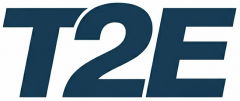Creating the ideal workplace is no small feat. From my perspective, fostering a safe and supportive work environment is crucial to driving employee satisfaction and productivity. When employees are free to express their creativity and focus on results without the constraints of micromanagement, a mutually beneficial dynamic emerges—one where both employers and employees thrive.
Gone are the days of fear-driven micromanagement. This outdated approach has no place in modern workplaces. Distrust in or dissatisfaction with leadership remains a leading reason why employees leave organizations, underscoring the need for leadership styles that promote trust, empowerment, and collaboration.
Empathy is a Strength, not a Weakness
A concern I often hear from veteran executives is that showing kindness or empathy toward employees might lead to reduced performance or exploitation. My response is clear: empathy and accountability are not mutually exclusive. In fact, they go hand in hand.
A high-performing workplace doesn’t sacrifice kindness for results. Instead, it integrates support with clear goals and measurable outcomes. Empowering employees means creating an environment where they take ownership of their work and deliver results, not lowering expectations.
Of course, when an employee repeatedly fails to meet expectations or lacks the willingness to grow, leaders must address the issue directly. If necessary, parting ways becomes the best course of action for both parties. Businesses exist to achieve results and generate profits, but this should never come at the expense of outdated, hierarchical management practices. True success lies in balancing empathy with accountability—fostering a culture where employees feel supported, motivated, and held to high standards.
The Importance of Setting Clear Expectations
Setting clear expectations is crucial for creating a productive and supportive work environment. Employees want to understand what is expected of them, especially when it comes to advancing in their careers. When expectations are unclear, it can lead to anxiety and confusion, leaving the team feeling uncertain and on edge.
An ideal workplace doesn’t mean leaving tasks or responsibilities open-ended. Clarity is key. Providing clear guidelines helps employees feel confident and ensures they know exactly what is required of them.
This becomes even more important during periods of change. Leaders must communicate clear expectations and goals to help employees navigate transitions effectively. By setting realistic objectives and timelines, leaders can keep their teams focused, motivated, and aligned as roles and priorities evolve. Clear communication fosters understanding and stability, even in times of uncertainty.
The Importance of Adaptability to the Ideal Workplace
In today’s workforce, younger employees often arrive with specific expectations about how they want to be managed and the type of environment they desire. While it’s encouraging to see individuals openly voicing their needs, it’s equally important to acknowledge that no workplace can cater to everyone’s preferences.
Organizational culture exists for a reason—it reflects the core values and goals of a business. Maintaining a positive, supportive culture is essential for promoting diversity and success. However, there will inevitably be situations where an employee’s preferences don’t align with a company’s established environment. This isn’t a matter of blame but rather a mismatch, and in these cases, adaptability becomes key.
Employees must recognize that not every organization will match their ideal vision of a workplace. The goal is to find a company whose values align with their own, while also understanding the importance of collaboration and flexibility in their professional journey.
Adaptability is not just a nice-to-have; it’s a critical skill for thriving in today’s dynamic job market. With industries, technologies, and work environments constantly evolving, adaptability enables individuals to embrace change, seize new opportunities, and communicate effectively with diverse teams.
Leadership in Established Cultures
Building an ideal workplace within established organizations comes with unique challenges. Many companies have deeply rooted cultures and long-standing practices that resist change. Yet, individual leaders hold the power to drive transformation.
A distinctive leadership approach can flourish even in traditional environments if there’s a willingness to embrace fresh ideas. Leaders who prioritize adaptability, empathy, and empowerment can gradually shift even the most entrenched cultures toward a healthier and more dynamic workplace. While change may be slow, persistent and intentional efforts can create environments where both employees and businesses thrive.
Embracing Change Helps Create the Ideal Workplace
In established workplace cultures, change is often met with resistance and unease. Yet, it remains a cornerstone of growth and innovation—especially for organizations striving to stay dynamic and forward-thinking. As leaders, our responsibility goes beyond simply accepting change; we must become its champions. This involves welcoming fresh ideas, adopting innovative strategies, integrating emerging technologies, and embracing diverse perspectives. These elements create the foundation of a truly transformative workplace.
Embracing change begins with a shift in perspective. Instead of seeing it as a disruption, leaders should view change as a powerful catalyst for progress and improvement. Effective leadership in this context is proactive, not reactive. Great leaders don’t wait for change to happen; they actively seek opportunities to adapt, evolve, and elevate their organizations. By doing so, they ensure sustained growth and long-term success.
Fostering Experimentation and Innovation
Creating a culture that thrives on change begins with fostering experimentation and innovation. Employees must feel empowered to explore new ideas and approaches without the fear of failure looming over them. In many traditional workplaces, failure is stigmatized, yet it is often a powerful teacher, offering critical lessons and insights. Leaders must embrace a “fail fast” mentality, where mistakes are seen as essential steppingstones to growth and improvement. This approach fosters a supportive environment where learning and creativity can flourish.
Equally important is the need for leaders to communicate the purpose and benefits of change clearly. Highlighting the reasons behind transformation and explaining how it benefits the organization, and its people inspires engagement and alignment. Transparent communication not only motivates employees to embrace change but also positions the organization as a forward-thinking workplace that attracts top talent. When leaders openly share how change drives innovation, growth, and success, employees are more likely to support and contribute to these efforts.
By prioritizing openness, adaptability, and a shared commitment to progress, leaders can cultivate a workplace culture where experimentation, collaboration, and creativity become the foundation for innovation and long-term success.
The Power of Listening and Open-Mindedness
Implementing change, especially when building an ideal workplace, inevitably generates feedback from those affected. For leaders, actively listening to their teams and approaching this feedback with an open mind is essential. It’s often in these conversations that the most valuable insights and ideas surface, offering opportunities to refine and enhance the change process.
Adopting an open-minded attitude ensures every perspective is acknowledged, fostering a culture of inclusivity and collaboration. When employees feel heard and valued, trust deepens, engagement flourishes, and decision-making improves. Inclusivity becomes a driving force behind progress and innovation.
Leading with Empathy for the Ideal Workplace
Empathy is the foundation of effective leadership, especially during times of change. A leader’s ability to genuinely understand and address employees’ emotions and concerns is essential. Change often brings uncertainty and unease, but leaders who acknowledge this and provide meaningful support can help their teams navigate transitions with confidence.
Empathetic leadership not only fosters trust but also instills a sense of security and empowerment among employees. This supportive approach creates an environment where transitions are smoother, and the organization is better positioned to grow, innovate, and collaborate. By combining empathy with an open-minded perspective, leaders can cultivate a workplace culture that inspires resilience, adaptability, and collective success.
Clear Communication
Clear and transparent communication is indispensable during periods of transformation. Leaders must keep their teams informed, aligned, and reassured throughout the process. Explaining the reasons behind changes, outlining actionable steps, and addressing their impact on employees are critical components of effective communication.
Open and honest dialogue builds trust and helps employees feel grounded, even amidst uncertainty. Regular updates and consistent messaging provide stability, reinforcing confidence in leadership while keeping teams unified as they adapt to change. Transparency is the key to ensuring that everyone feels included and supported during transitions.
Positive Attitude
Change often brings challenges, but a leader’s attitude can profoundly influence how their team responds. A calm, positive, and composed demeanor fosters a sense of stability and reassurance. When leaders project optimism and confidence, even in difficult moments, they help their teams envision a brighter, more promising future.
A positive attitude uplifts morale and strengthens trust. Employees are more likely to feel motivated and supported when they see their leader approaching challenges with resilience and composure. By maintaining focus and cultivating a constructive environment, leaders can guide their teams through periods of uncertainty and create a culture of growth, collaboration, and shared purpose.
The Ultimate Goal
The ultimate goal of an ideal workplace is to create an environment where employees are happy, supported, and able to perform at their highest potential. Reducing stress enables employees to thrive, enhancing both productivity and overall well-being. Fostering a sense of ownership and belonging empowers employees to excel in a supportive and nurturing workplace, ultimately benefiting both the individual and the company. A successful workplace recognizes the importance of not only achieving short-term goals but also creating a sustainable and positive work culture for long-term success.
Conclusion
Even in well-established workplace cultures, leaders have countless opportunities to shape an ideal workplace that inspires and empowers their teams. By prioritizing open communication, promoting work-life balance, and encouraging both personal and professional development, leaders can foster a workplace where employees feel valued and driven to succeed.
Leadership is a dynamic process, requiring continuous self-reflection and adaptation. Through thoughtful actions and decisions, leaders can create meaningful, positive impacts on their teams and the organization as a whole. With these strategies, leaders can build a thriving workplace that nurtures fulfillment, growth, and long-term success for everyone involved.
Click here for a post on why some companies are shifting focus from empathy to productivity.






